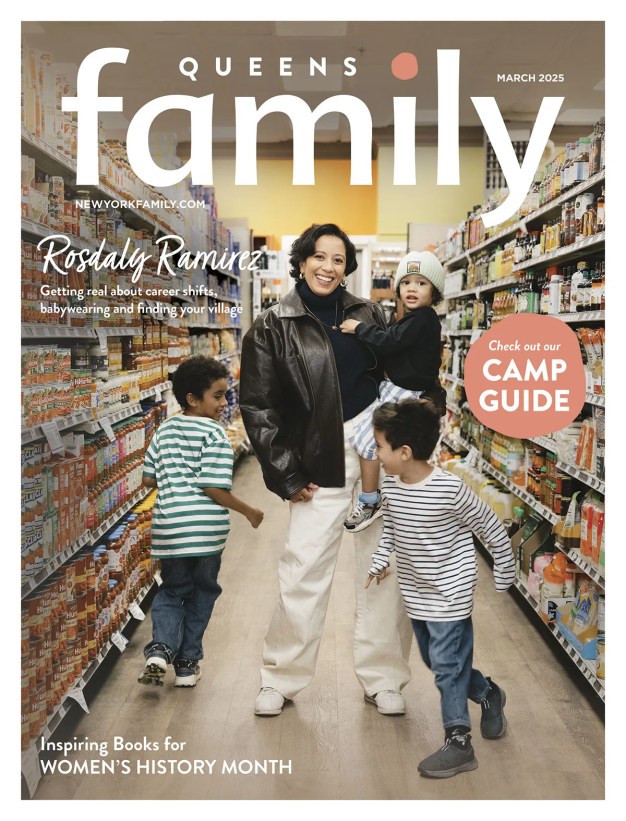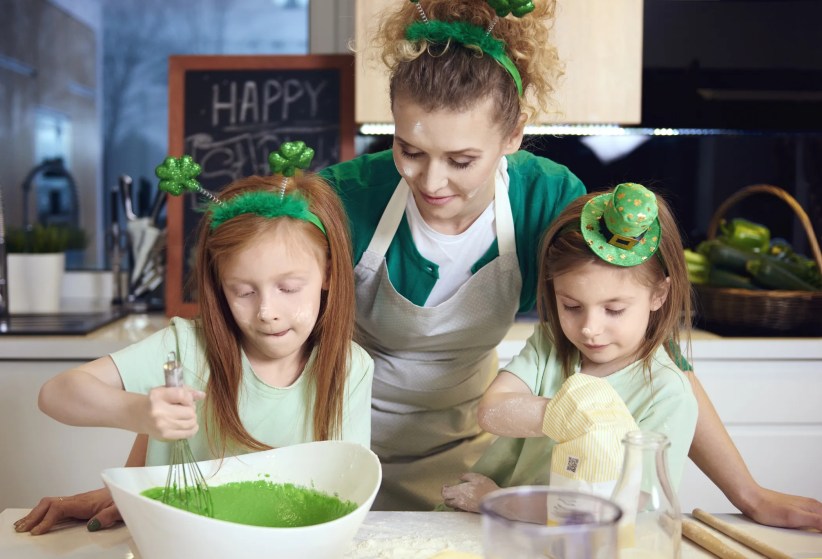We’ve all done it as parents. We have rewarded our child with a promised snack or a treat. Maybe it was an ice cream for a good report card or a dessert for winning a game. Food, after all, is a comfort, but when these small rewards turn into habits, you may have a real problem.
“I can’t really remember how it started,” says Laura Pellegrino of Clinton Hill, Brooklyn. “It certainly wasn’t a conscious decision, but I always wanted to have my daughter feel satisfied and happy. When she was a baby, I began comforting her with a bottle and it later turned to a snack here and there.” Pellegrino’s daughter, Theresa, is a bright-eyed, 8-year-old who last year weighed 125 lbs., a typical weight of an adult woman.
Unfortunately, this story is anything but unusual. According to the Centers for Disease Control and Prevention, in American children ages 2-19, 16.9 percent of them are considered obese, and the American College of Cardiology reports that 33 percent are overweight. Furthermore, researchers from Columbia University report obesity as the biggest overall health threat facing the country. Child obesity has reached epidemic rates and become one of the leading health concerns in the country. It can cause heart disease, high blood pressure, high cholesterol, early onset of puberty, liver disease, diabetes, and shortened life span. There are several reasons for the growth of child obesity, ranging from practical to emotional, and treatment is likewise, multifaceted, which can overwhelm parents. The first line of defense is knowing where and how to begin.
Know the numbers
First, you must find out how your child’s numbers stack up. Ask your pediatrician about your child’s weight in correlation to healthy ranges.
“Pediatricians generally calculate a body mass index (BMI) at each yearly physical,” explains Dr. Jennifer Gruen of Village Pediatrics in Westport, CT. “The BMI is an estimation of body fat based on height and weight. We also plot the BMI on a graph to compare a child’s number to other children their age. For children, a BMI percentile of 85-95 percent is considered overweight and over 95 obese.”
In Pellegrino’s case, her pediatrician first advised her that her daughter was considered obese. She found the news troublesome but didn’t know how to change anything, so she sought out a nutritionist who clued her into the daily requirements for a then 7-year-old.
“By having a list of foods and acceptable portions, it helped me to monitor exactly how much Theresa should be eating,” she says. Theresa has since lost 19 lbs.
Talk it out
Emotions are vital in the weight loss process. Even initially speaking with your child about a weight problem can be a very sensitive subject. Dr. Joanna Dolgoff, a Manhattan pediatrician and child obesity expert in Child and Adolescent Weight Management, says in her new book, Red Light, Green Light, Eat Right, that parents should be truthful but tactful as well. “Most overweight children know they are overweight. Even if you haven’t pointed it out, their peers probably have.” She says that if parents avoid bringing up the subject, it will only result in kids thinking it shameful to talk about. Instead, she advises parents to speak in terms is “we” instead of “you.” Say “we” are going to eat healthier, and ‘we’ are going to get more active. Dr. Dolgoff also encourages parents to be open about their own weight struggles and explain why certain foods are healthier than others. Always be available for support and praise your child for making healthy conscious choices.
Other important advice from Dr. Dolgoff is to be positive. It’s imperative not to express negativity or fatalism, by saying it’s in your child genes and they have no power over getting fit. Don’t make fun of your child’s weight—ever! Don’t become the food police and forbid or force any foods, which can result in rebellion. Most of all, Dr. Dolgoff stresses that you should never put your child on a popular fad diet because children need a healthy balance of all foods, even carbs and fats, to help them develop properly.
Walk it off
For Martha Bentley of the Lower East Side, her son’s weight problem occurred from a matter of convenience.
“I work up to 10 hours a day and when I get home, I’m tired. So I began doing things for convenience, like ordering pizza and filling up Mark’s lunchbox with bags of chips and cookies to throw in with a sandwich. They were easy to grab in the morning. Mark was very slim throughout the second grade, even though he ate all the junk food. But I noticed last year that he began growing out of all his pants faster than usual.”
Mark is in the third grade and now wears a size 12 in pants and has grown an inch. Just a year ago he wore a size 14. Bentley says she had to make big lifestyle changes to get him healthy, which included cutting down her work hours, preparing healthy meals, and getting him involved in activities.
“Mark would come home from school and sit on the couch all afternoon playing video games, but my mother watched him and she was elderly, so my hands were tied. Now I come home earlier and make taking a walk part of our daily routine.”
Dr. Gruen agrees that technology and lack of time spent exercising play a big role in child obesity rates.
“Modern life has contributed greatly to the general increase in our children’s weight. Children rarely walk anywhere as part of their daily routine (walking to school, to the ballfield…). Sports tend to be structured (as in Little League) instead of running to the corner playground with friends after school. This limits real exercise to children who can afford to play, and want to play in an organized fashion. And even for these children, these sessions are also often shorter than when kids went out to play for hours after school as well. Dual-income families also often mean children are in after-school care programs, or home alone after school, which also limits access to exercise,” Dr. Gruen says. She adds: “Modern technology such as cellphones, game stations, and computers also encourage stationary entertainments. Recent estimates have suggested that children are spending up to seven hours a day on technology and TV!”
This inactivity combined with poor quality food choices is a recipe for weight gain. In addition, common ingredients found in many kid’s snacks contain high-fructose corn syrup, a cheap food and drink additive that contributes to the obesity epidemic.
“Our digestive system operates largely on secretion or suppression of two hormones: ghrelin and leptin. Ghrelin increases your appetite while leptin tells your brain ‘I’m full,’ ” Dr. Gruen explains. “High-fructose corn syrup suppresses leptin, making it harder for your brain to register satiety. It never shuts off ghrelin, however.” This causes a child to never be satisfied and look for more and more food.
Change habits
According to Dr. Jason Kronberg of the Pediatric and Adolescent Sports Medicine and the Pediatric and Adolescent Medicine of Long Island: “The hardest part of breaking the obesity cycle is changing dietary habits. Studies have shown that after age 13, the chance of changing one’s eating habits is slim. Most people have developed eating habits at that age that stay with them for their entire lives. The important issue is getting parents to change their habits that will filter down to their children.”
Patty Straffalino, of Yonkers, agrees, “I have to admit that I didn’t realize how much my poor eating habits contributed to my daughter, Maria, being overweight.”
Straffalino says that she had been overweight her whole life and didn’t want her daughter to experience the same pain she went through growing up as an overweight child. When Maria came home from school and was crying because her classmates had ridiculed her weight, it was a wake-up call. She immediately put her entire family on a healthy eating plan. “Seeing Maria devastated hurt me because I knew I was in charge of the food that came into the house.”
Straffalino says she never told her daughter she had to lose weight, but focused instead on being healthy. Maria has gotten slimmer and lost 14 lbs., Straffalino has lost 36 lbs., and her husband has lost 21 pounds in the past 10 months.
While no parent wants to watch her child suffer the repercussions and health problems that come with obesity, every child can get healthier with a little help. As Pellegrino says: “I learned throughout this whole process that everyone can do small things that add up to better health, and it will be tough, yet certainly doable. But it all starts with the parent.”
Danielle Sullivan is a writer living in New York City. Follow her on Instagram
@Deewrite.























